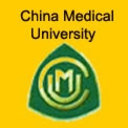Biomonitoring of non-dioxin-like polychlorinated biphenyls in transgenic Arabidopsis using the mammalian pregnane X receptor system: a role of pectin in pollutant uptake.
Paraules clau
Resum
Polychlorinated biphenyls (PCBs) are persistent organic pollutants damaging to human health and the environment. Techniques to indicate PCB contamination in planta are of great interest to phytoremediation. Monitoring of dioxin-like PCBs in transgenic plants carrying the mammalian aryl hydrocarbon receptor (AHR) has been reported previously. Herein, we report the biomonitoring of non-dioxin-like PCBs (NDL-PCBs) using the mammalian pregnane X receptor (PXR). In the transgenic Arabidopsis designated NDL-PCB Reporter, the EGFP-GUS reporter gene was driven by a promoter containing 18 repeats of the xenobiotic response elements, while PXR and its binding partner retinoid X receptor (RXR) were coexpressed. Results showed that, in live cells, the expression of reporter gene was insensitive to endogenous lignans, carotenoids and flavonoids, but responded to all tested NDL-PCBs in a dose- and time- dependent manner. Two types of putative PCB metabolites, hydroxy- PCBs and methoxy- PCBs, displayed different activation properties. The vascular tissues seemed unable to transport NDL-PCBs, whereas mutation in QUASIMODO1 encoding a 1,4-galacturonosyltransferase led to reduced PCB accumulation in Arabidopsis, revealing a role for pectin in the control of PCB translocation. Taken together, the reporter system may serve as a useful tool to biomonitor the uptake and metabolism of NDL-PCBs in plants.




